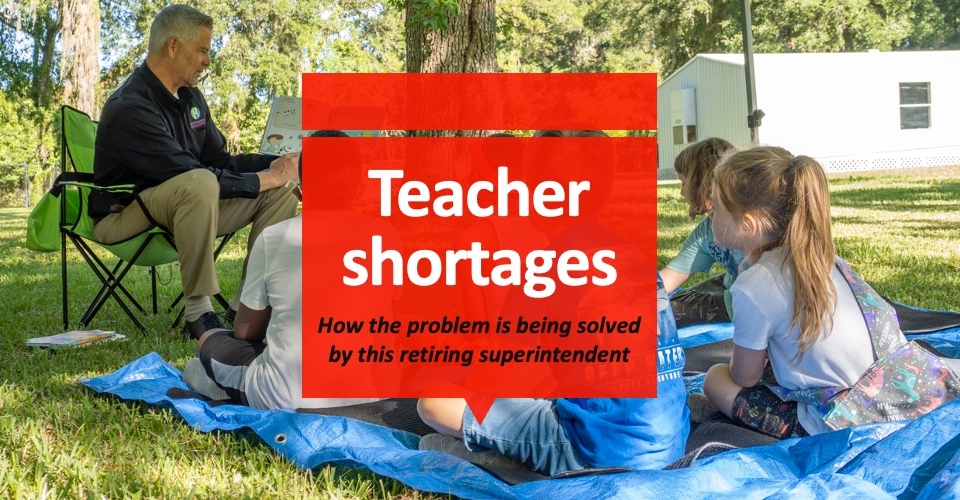Moses Ojeda knows firsthand the power of dual-enrollment courses to propel students—particularly first-generation students—to college.
The principal of Thomas A. Edison Career & Technical Education High School in Jamaica, Queens—one of New York City’s premier CTE schools—has led an effort to expand his school’s dual-enrollment offerings while also building close ties to local higher-ed institutions. That has resulted in a large percentage of students applying to college. Edison’s student body has an 88% application rate to The City University of New York’s 25 colleges.
“For us at Edison, I think it’s crucial to get them as close as possible, before they leave us, with some credits in their pocket. That leverages the fact that they will finish,” Ojeda said, noting it’s important to align students’ courses with career-focused skills so “they see what they are learning and what their passion will be for the future.”
‘Talking Out of School’ podcast: Teachers need ‘professional authority’
Research has long shown that dual-enrollment programs increase high school completion rates, college enrollment and graduation.
However, the job market and educational landscape have greatly changed since the Community College Research Center at Columbia University’s Teachers College conducted its 2012 study examining the benefits of career-focused dual-enrollment programs for students, particularly who are historically underrepresented in higher education.
Today’s modern workforce requires a greater level of technical and technology-based skills than ever before. The U.S. Department of Education projects that by 2027, 70% of jobs will require education or training beyond high school.
The K12 classroom has also evolved considerably. While digital education was gaining traction before the pandemic, the sudden closure of schools hyper-accelerated the use of digital learning. Students today regularly use computers and schools are wired for the internet.
With tech-enabled classrooms, it’s time now to reimagine how we deliver dual-enrollment to ensure more students benefit from these programs. Here are four considerations for school and district leaders to expand access to dual-enrollment / dual-credit programs while maximizing their impact.
1. Embrace asynchronous models of learning
Just as remote work is commonplace today, district leaders can adopt online learning to bring college courses to the high school environment. By leveraging technology for asynchronous courses, students get the benefit of learning from college professors without the hassle of leaving their buildings or missing other classes.
This increases access to higher education by eliminating logistical challenges associated with traditional on-site, in-person dual-enrollment courses, such as transportation to local colleges (if that’s an option) or having qualified teachers lead college-level courses. An asynchronous approach provides students a convenient way to earn high school and college credits at the same time. Students can learn during any class period, with any teacher in the classroom, regardless of the teacher’s expertise.
2. Align dual-enrollment programs to high school learning experiences
Taking college courses in high school helps students “try on” the college experience in a safe environment. Traditional college-level courses often require high school students to learn new material in a fast-paced environment and be assessed for their understanding through high-stakes tests.
To better align with high school assessment styles and lesson planning, technology-enabled dual-enrollment programs help educators assess students on skills mastery more frequently and formatively in a familiar environment. Teachers also benefit from visibility into their students’ learning through progress monitoring.
3. Help reduce the financial burden on students
As student loan debt skyrockets, now totaling $1.8 trillion, more and more students are realizing one of the key benefits of earning high school and college credits simultaneously through dual enrollment courses is reducing the cost of college tuition. The number of dual-enrolled high school students jumped by 8.8% last year, outpacing all other undergraduates enrolled in college, according to the National Student Clearinghouse Research Center.
With the average cost for a single college course ranging from nearly $1,200 for public universities to more than $4,000 for many private institutions, getting transferable college credit at no cost to the student in high school can substantially reduce the burden of paying for college for many families.
4. Invite students to explore new subject areas and career paths
Online dual-enrollment courses can expose students to a wider range of subjects that may not be offered by their high school or community college, allowing them to discover where their passions lie and providing a jumpstart on college or a future career.
These courses, we know, can transform students’ lives. The key, however, is ensuring more students have access to dual-enrollment programs—especially from the comfort of their school—to enable them to learn job-specific skills and truly get excited and engaged as they embark on the pathway to their future careers.









